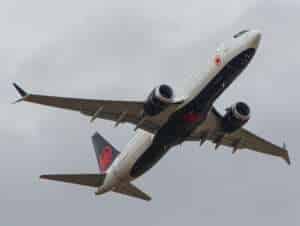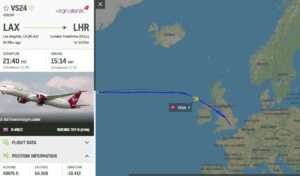Merry Christmas everyone! Letís start off our 2023 highlights with an AviationSource interview from earlier... The post 2023 Highlights: Air Greenland & Growth in the Market appeared first on AviationSource News.
Merry Christmas everyone! Letís start off our 2023 highlights with an AviationSource interview from earlier this year with Air Greenland CEO Jacob Nitter SÝrensen.
We sat down with him earlier this year to discuss how things at the airline were going, as well as what isin store for the future.
Without further ado, letís get into itÖ
The Air Greenland Feature Part 3: CEO Says The A330-800neo Has Been Smooth SailingÖ
Air Greenland CEO Jacob Nitter SÝrensen has said that the Airbus A330-800neo has been smooth sailing so far.
AviationSource got to sit down with Air Greenland CEO Jacob Nitter SÝrensen to discuss where the airline is currently and the challenges he is facing within the airline and the country.


Did you know AviationSource has two newsletters? One covers the general news and analysis of the industry as a whole, and the other to do with emergencies that take place throughout the year! To subscribe to our General News Newsletter, CLICK HERE! To subscribe to our Emergencies, Accidents & Incidents Newsletter, CLICK HERE!
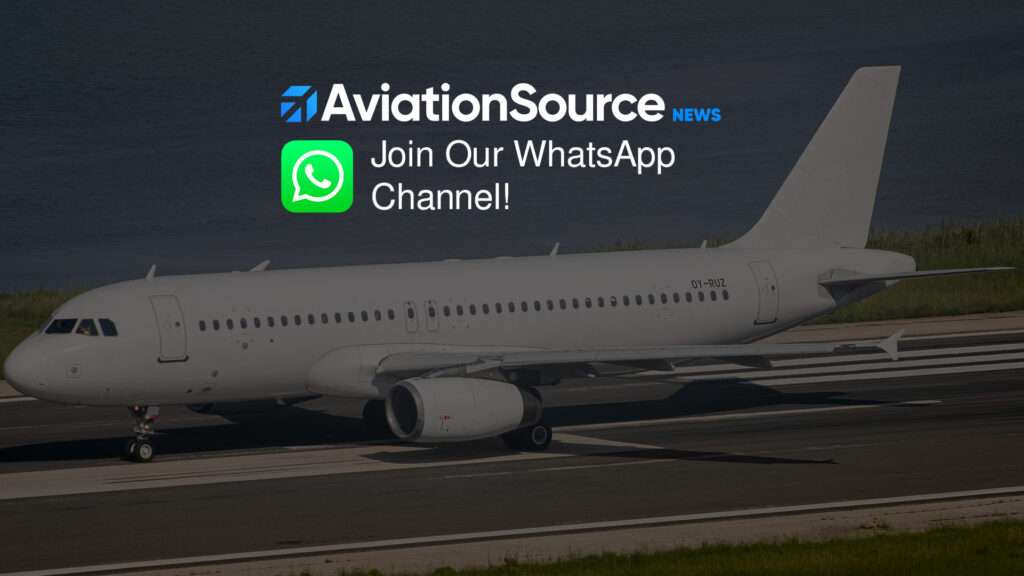
Click the photo to join our WhatsApp channel so then you can stay up to date with everything going on in the aviation industry!
About JacobÖ
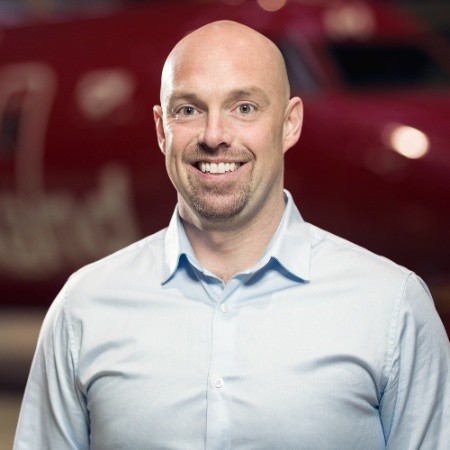
SÝrensen has been with Air Greenland for nearly 23 years, having started out life as a pilot in April 2000.
In January 2006, he became the Chief Pilot for their King Air fleet before becoming a Training Manager for two years thereafter.
October 2009 comes along, and SÝrensen had been promoted to Chief Pilot of the Dash 8 fleet and was responsible for successfully introducing the aircraft into the fleet.
By October 2011, he became Director of Flight Operations, where he held that post for six years and four months before becoming the Acting CEO & Accountable Manager in May 2017.
He was held in the interim position for around 10 months before he was made the official CEO in February 2018, where he has been since.
Without further ado, letís get into the interview!
The InterviewÖ
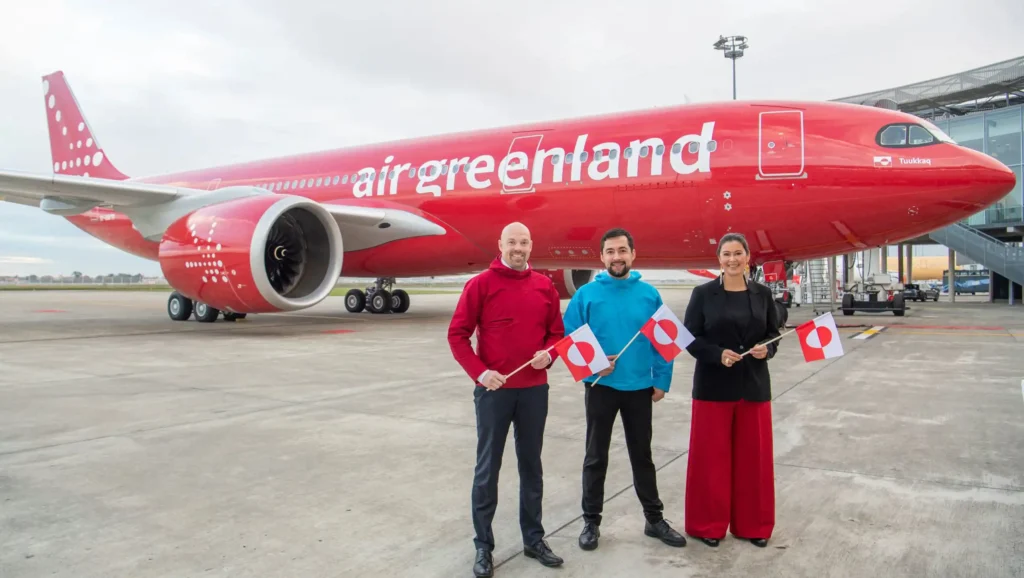 Executive leadership team celebrating the delivery. Photo Credit: Air Greenland.
Executive leadership team celebrating the delivery. Photo Credit: Air Greenland.
JF: Jacob, thank you for taking the time to speak with AviationSource. Congratulations on the delivery of your Airbus A330-800neo! Can you go over the kind of decision-making that brought you to select the A330neo for Air Greenland?
JS: Of course. Itís a complicated process because, first of all, you have the commercial side. Whatís the market? Whatís our current yield?
You need to have the right number of passengers in the seats and everything. But we know the market.
What you have to remember is that this is a replacement aircraft, so it wonít be used to open up new markets.
What has been sort of tricky with this decision is the new infrastructure and the new airports that are being built in Greenland, and that is why the choice came down to the A330-800neo.
We also have a significant amount of cargo going into Greenland, and that is why we decided to stick with the wide-body solution.
You also have the sustainability factor as well as runway constraints as big elements to deal with. When we came to the decision-making process, we had three aircraft in mind: The A330-800neo, the Boeing 787-8 Dreamliner, or the 767-300.
We did all of the analysis, from financial to operational, and the 767 was out of the race immediately, so it came down to the A330neo or the 787.
It came down to the A330neo because it was the best match in terms of configuration, seat count and for operational capability. Both aircraft were a great choice, but in the end, the A330neo came out on top.
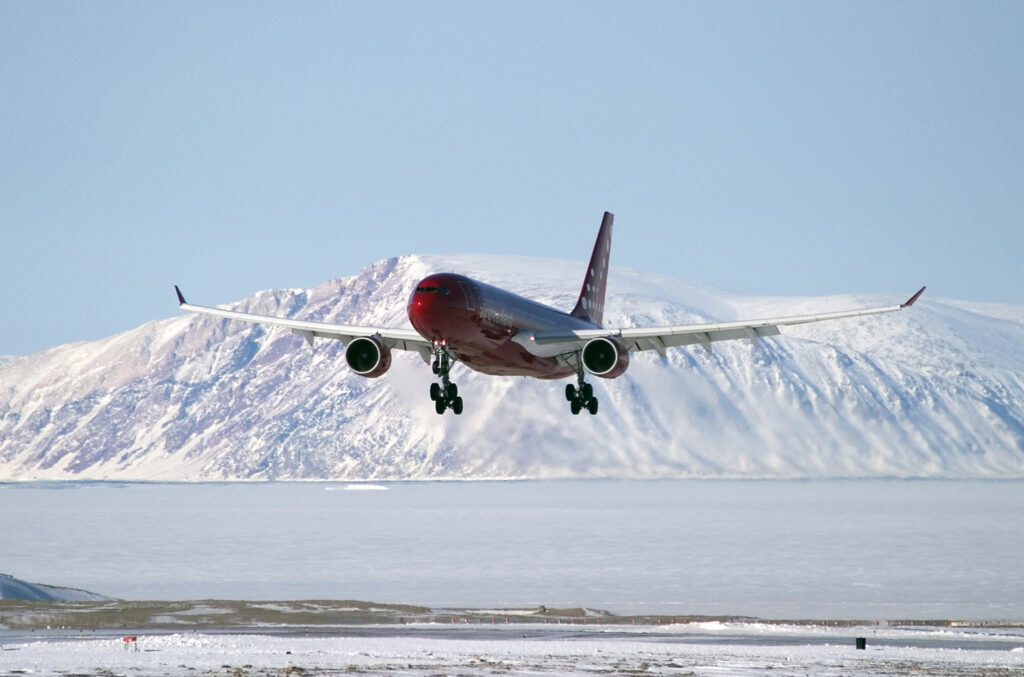 EHRENBERG Kommunikation via Wikimedia Commons
EHRENBERG Kommunikation via Wikimedia Commons
JF: Itís interesting you mention the infrastructure of Greenland, especially with the A330-800neo. The aircraft has a wider wingspan (64m wingspan) than your current A330-200 aircraft. How has the new aircraftís first set of operations been so far? Has it been smooth sailing with the infrastructure on-hand?
JS: Itís been smooth sailing. The aircraft did its first commercial flight yesterday (December 19, 2022) and itís flying today (December 20, 2022), and everything is working out perfectly. So there havenít been any problems so far, and itís been a very smooth transition.
Of course, that is a big factor. If you are switching from one manufacturer to another, there are huge transition issues, going from something you have worked with for 20 years to something completely new.
JF: To what extent did Airbusí commonality program have an effect on the decision-making process for the new aircraft?
JS: Quite a heavy extent because the transition has been very smooth through training and parts. There are a lot of commonalities, which makes the process much easier.
JF: Looking towards the future of Air Greenland, are there any aircraft that you have in mind for future international operations? Potentially, the Airbus A220, as seen with the successful airBaltic business model?
 Photo Credit: Airbus
Photo Credit: Airbus
JS: The situation in Greenland at the moment is that the capacity, especially in the Summer season, is maxed out.
So even though we could bring in more people, and there is definitely a demand for it, we canít support more people coming to Greenland at the moment.
So, it doesnít really make sense right now to look at expanding the fleet too much because there are other things in the supply chain that have to be fixed first.
But of course, from a long-term perspective, we can see it turning into a growing market, which could fuel fleet expansion in the future. And with that, it also has to offer a smooth sort of transition when we do expand.


Did you know AviationSource has two newsletters? One covers the general news and analysis of the industry as a whole, and the other to do with emergencies that take place throughout the year! To subscribe to our General News Newsletter, CLICK HERE! To subscribe to our Emergencies, Accidents & Incidents Newsletter, CLICK HERE!

Click the photo to join our WhatsApp channel so then you can stay up to date with everything going on in the aviation industry!
We will go through the same analysis process as weíve done this time and see what the right aircraft for that type of operation will be.
Of course, the A220-300 is a great aircraft. Itís got low fuel burn, itís modern, itís efficient, and it can serve both short-haul markets and longer sorts of flights.
But there are so many other aircraft out there, so it will come down to the final analysis and what will be the best fit when that time comes.
JF: Itís interesting how you mention capacity is maxed out currently. Do you believe that competitors may not want to expand into Greenland because of this?
JS: Well, right now, itís definitely an issue.
As we get closer to the opening of new airports and more projects seeing the light of day, then investor confidence will increase as the capacity offering increases in due course.
So I think itís just going to be a sort of chicken and egg thing. Once the airports are there, the investors will come, and we will see an increase in capacity for the airline.
So I think itís just going to follow a sort of natural progression, really.
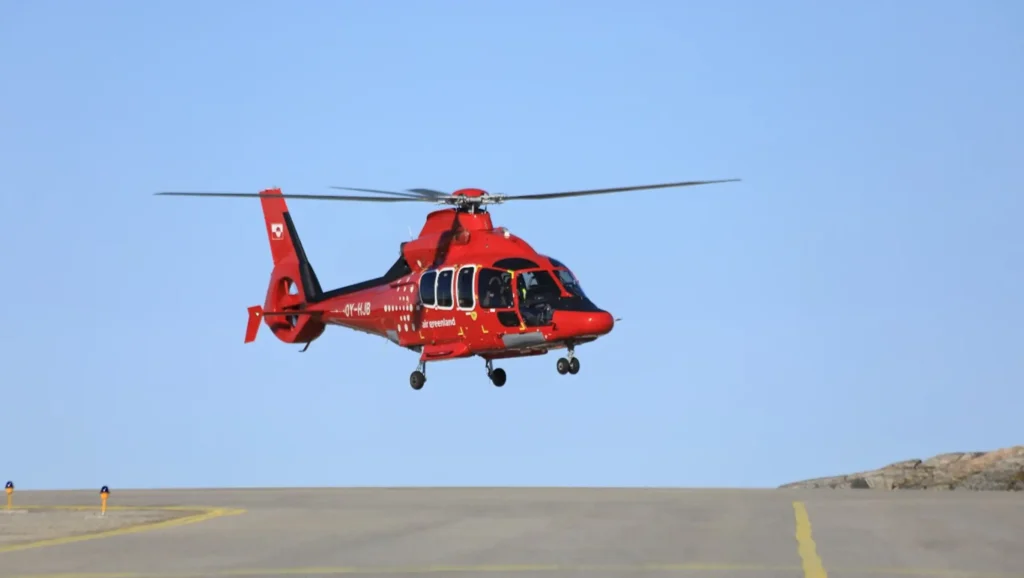 Air Greenlandís H155 helicopter. Photo Credit: Air Greenland,.
Air Greenlandís H155 helicopter. Photo Credit: Air Greenland,.
JF: Earlier this year, I spoke with the CEO of PLAY, Birgir Jonsson, and he said that running airlines within this part of the world is more community-driven as opposed to competition-driven. Do you agree with that statement?
JS: Yeah, Air Greenland is a major part of the Greenland Infrastructure. So even though we are running as a commercial airline, we still serve a very crucial role in society.
So when we are discussing competition in the future, the framework for potential competitors or other airlines is very important because we have a very short summer season, and thatís where the demand is.
So, if you allow competitors to skim the milk for three months, that basically means that the rest of the year is going to be very difficult for the carrier, as we make our money in the Summer months.
That sort of profit has to last us for the rest of the year.
We do an all-year operation to all of Greenland, so of course, we are wanting to see what the framework is going to be like.
Of course, there needs to be a level playing field, otherwise, youíre going to change the dynamics of the infrastructure quite dramatically.
Competition is good for consumers, but it needs to be on sort of level terms, and thatís something we will have to see play out.
Having said that, with the A330-800neo in place, the opening of new airports, and more, things will become very competitive on those routes.
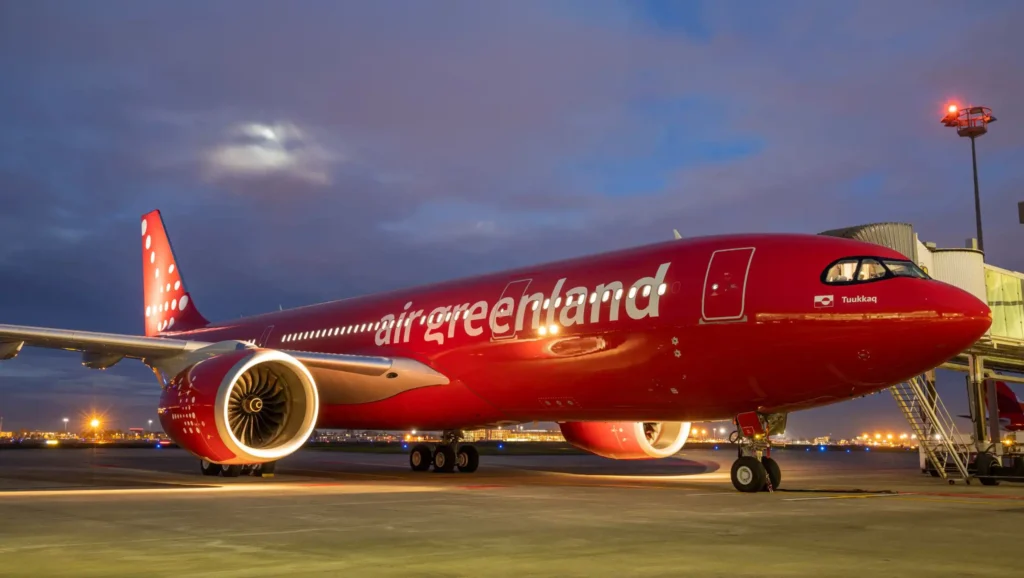 A330-800neo by night. Photo Credit: Air Greenland.
A330-800neo by night. Photo Credit: Air Greenland.
JF: Itís interesting how you mention the short Summer season and how that is your chance to capture the revenue and the profit. How difficult is it to maintain an airline year-round in Greenland because of this?
JS: It is quite difficult because, because not only do you see low volume in the non-peak months, but the operation is also very challenging because there is a lot of bad weather, such as snow, lots of ice, and lots of irregularities that come within the network because of that.
One of the things that Air Greenland does is that we take care of the passengers from start to finish, even when the irregularities may not be within our control.
So even though itís bad weather, in other markets you sleep in the terminal, and you are on your own, so to speak.
But with Air Greenland, because we are part of the infrastructure, we make sure that you get a hotel bed, we make sure that you get food, we make sure that you get taxis, and we make sure that you get to your final destination.
It might take a few days, but we will get you there and take care of you all the way. That is, of course, a huge cost for the airline to do this, but it is part of the service.
If we get into a very competitive situation, thatís one of the things that we will continue doing. Our returning customers appreciate that level of service.
It will be difficult to sort of leverage that service because people donít really expect that things can go wrong the way that they can in this country. So it is difficult for sure.

As you can see from our route map, everything is interconnected.
If are sitting up at 79 degrees north, you can take a helicopter down, then you can take the Dash 8 further through the route network, and then you can use the A330neo to connect onwards internationally.
Itís very complex, but everything is interconnected.


Did you know AviationSource has two newsletters? One covers the general news and analysis of the industry as a whole, and the other to do with emergencies that take place throughout the year! To subscribe to our General News Newsletter, CLICK HERE! To subscribe to our Emergencies, Accidents & Incidents Newsletter, CLICK HERE!

Click the photo to join our WhatsApp channel so then you can stay up to date with everything going on in the aviation industry!
JF: As you have mentioned about the Dash 8, letís bring in what you have touched upon about sustainability. Are there any plans for Air Greenland to potentially move to all-electric alternatives in order to meet climate objectives?

JS: Of course, we have been looking at all of the exciting initiatives that are going on with electrified aircraft.
The biggest challenge at the moment is basically the range of these aircraft. That being said, however, we have entered an agreement with Avolon to take on some Vertical Aerospace VX4 EVTOL aircraft.
We will benefit from such electrification in Ilulissat, where the area is powered by hydroelectric power.
So the VX4 will work for the routes around that area as the ranges are quite short. I think itís going to be at least 10-15 years before electric aircraft will see any form of range increases.
Itís going to happen sometime in the future, but there are also a lot of interesting hybrid solutions. We have ZeroAVIA, Airbusí ZEROe Hydrogen, and much more to be excited about.
JF: My final question pertains to Sustainable Aviation Fuels (SAF). When SAF was first released, there has been concerns about the freezing point limitations as opposed to Jet A1 fuel. Since receiving the A330-800neo, what have been your observations around SAF, seeing as Greenland is a very cold country in temperature?
JS: Thatís a really good question. First of all, SAF must meet the same specifications as Jet A1, which is basically a freezing point of -47c.
When you put SAF in the tank, you know that the specifications are going to be the same. When we did the delivery flight from Toulouse to Greenland, we actually had 30% SAF in the tank.
Right now, we are operating the aircraft with 5% SAF in the tank on all flights for 2023, which is an investment, but itís part of making Greenland a sustainable destination and leading the way in the field.
We have a very efficient aircraft, but we want to do a bit more than that. That is why we have made the investment we have made.
 A330-800neo by night. Photo Credit: Air Greenland.
A330-800neo by night. Photo Credit: Air Greenland.
I think that it is something quite important that we, as an airline flying to Greenland, which has a fragile climate, that we do as much as we can in terms of sustainability, and thatís why we are investing in SAF. Of course, weíre hoping to increase this amount in the future as well.
OverallÖ
It remains clear that Air Greenland has had a lot of success over the last 60 years, and despite the unstable climates, they have done well to come out the other end at each point.
With the A330-800neo now in commercial operation, it is going to be interesting to see how much further Air Greenland can take their investment in SAF going into the future.
What has remained clear throughout this future is that Air Greenland isnít just an airline, they indeed represent a lot of the infrastructure of Greenland, and that is something that CEO Sorenson has been wanting to keep pushing as a message for the carrier.
Once more infrastructure is added to Greenland, whether it be more airports, hotels, restaurants, etc., Air Greenland has the potential to become a significant airline outside of the countries that they currently serve.
Click here for Part 1 of The Air Greenland Feature
Click here for Part 2 of The Air Greenland Feature


Did you know AviationSource has two newsletters? One covers the general news and analysis of the industry as a whole, and the other to do with emergencies that take place throughout the year! To subscribe to our General News Newsletter, CLICK HERE! To subscribe to our Emergencies, Accidents & Incidents Newsletter, CLICK HERE!

Click the photo to join our WhatsApp channel so then you can stay up to date with everything going on in the aviation industry!
The post 2023 Highlights: Air Greenland & Growth in the Market appeared first on AviationSource News.



